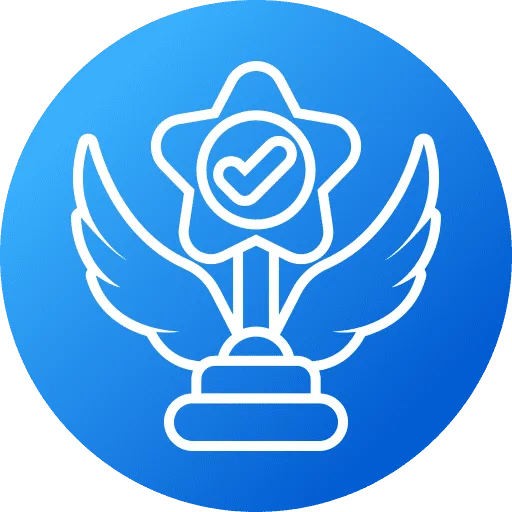Sphinx Pose is also known as “Salamba Bhujangasan”. This posture is a modified form of “Bhujangasan”. It is one of the easy posture, so it is an effective yoga for beginners.
This posture opens the chest and shoulders. It is beneficial for those who have lower back pain. Because it reduces rotation, it helps to reduce the pressure on the spinal cord.
Doing this posture stimulates the body and reduces fatigue. The name of this asana comes from Sanskrit word “Salamba”, which means “Supported” and “Bhujanga”, which means “Cobra” and “asana” which means “posture”.
Let’s see the method of doing “Salamba Bhujangasan” or “Sphinx Pose” and its advantages and contradictions.
How to Do Sphinx Pose or Salamba Bhujangasan?
Step 1.
Lie down on the pedestal and place the feet parallel on the floor and place the forehead in a relaxed position on the ground.
Step 2.
Then lightly touch the toes with each other and make your feet together.
Step 3.
Now straighten the hands forward and touch the palms on the ground.
Step 4.
Breathe deeply and then gently lift the head, chest and abdomen, while the navel should remain on the floor.
Step 5.
Drag the trunk backwards from the ground with the help of arms.
Step 6.
Breathe and release gradually and take care of every part of the spinal cord. Make sure your feet are still together and the head is straight forward.
Step 7.
Then exhale and bring your abdomen, chest downward and then slowly bring the head down towards the ground.
| Footnote. For the beginners they can use a towel for the support. Roll a towel and arrange it in U-shape on the floor. Lie down above your pubic bone with the bottom of the U and the U’s sides will under the edges of your abdomen, it will help you to raise the stomach. |
Benefits of Sphinx Pose or Salamba Bhujangasan.
If you are a person who is suffering from several diseases, then Bhujangasan can remove all these diseases within a few days. So let’s see what are the benefits of Sphinx Pose or Bhujangasan;
Relieve Constipation.
Bhujangasan is very good for those who have digestion problems and it also beneficial for the problem of constipation and acidity. Moreover, it eradicate difficulty in excreta and keep your stomach cleaned.
Make Bones Flexible.
Through Bhujangasan you can keep your spinal cord strong and flexible. It also helps to strengthen the muscles of the chest, shoulders, arms and abdomen.(1)
Improve Blood Flow.
Regular practice promotes blood flow into the body and keeps you active. It remove irritability or anger.
| Read Now: Top 7 Yoga Poses for Intermediates. |
Remove Irregularity.
Bhujangasan eliminates the irregularity of menstruation in women.(2) In addition, it is also very helpful in protecting against diseases like asthma and stica.(3)
Relieve Back Pain.
Bhujangasan is very helpful in getting rid of back pain. It makes the bones of the spine flexible and relieve back pain.(4), (5)
Improve Posture.
It removes blood impurities in the back and tones the veins. This posture helps to create a positive connection between the brain and other organs of the body, which keeps you healthy.(6)
Beneficial for Kidney.
Bhujangasan keeps the kidneys of our body narrowed so that there is a stagnation of blood, which improves function of the kidney and keeps us healthy.(7)
In addition, it also keeps the lungs healthy and eradicate respiratory problems.
Apart from those health benefits it have several other benefits such as;
- This posture stimulates the abdominal organs.
- The practice of this posture helps to reduce stress and anxiety.(8)
- Strengthened the nervous system.
- It brings dilation to chest and shoulders.
| Read Now: 6 Best Yoga Poses to Boost Immunity. |
Follow-up Poses after Sphinx Pose or Salamba Bhujangasan.
You can do Viparita Shalabhasana after the Sphinx Pose or Salamba Bhujangasan.
Contradiction.
Yoga has lot of benefits, but there is also some contradictory behind Bhujangasan. Let us know what precautions the person should take while doing Bhujangasan.
- If one has ulcers, hernia and tuberculosis, he should not do Bhujangasan under any circumstances.
- Those who have hypo thyroid problems, do this posture only after consulting the doctor.
- If you have an injury in your abdomen or if you are an asthma patient, you should stay away from Bhujangasan.
- The pregnant woman should not try to do Bhujangasan under any circumstances.
- If you have a chronic injury or severe pain in your back, you should not do Bhujangasan at all.
- Avoid this posture if you have pain in your ribs or wrists.
- Do not practice this posture if there is a stomach operation.
- Avoid if you have back injury and shoulder problem.
Frequently Asked Questions.
Sphinx pose mainly strengthen 7 muscle groups, like;
Lengthens the abdominal muscles.
Strengthen the spine.
Firms the buttocks.
Stretches and opens the chest, lungs and shoulders.
Pelvic floor muscles.
Biceps and Triceps.
Thigh muscles.
Sphinx pose and cobra pose have some difference in bending posture. Basically cobra pose is a part of Sun Salutation or Surya Namaskar. In Cobra pose we bend our back with slightly strong, however in sphinx pose we lift the belly with active legs.
Bottom Line.
Although practicing yoga is very beneficial for the body and mind, it is not advisable to try it in lieu of medicine. The practice of yoga postures will be very beneficial under the supervision of the instructor.
If there is a physical or mental defect, it would be very effective to do it under the supervision of a trainer. If there is a physical or mental defect, practice yoga only after the permission of the doctor.
You are requested to write your suggestions, feedback or health related questions in the Comment Box below or in Contact Us!
If you find this article useful and you understand that reading this article can benefit someone’s health, please share this article on your Facebook, Whatsapp or Twitter account by pressing the button below!
+8 Sources
Freaktofit has strict sourcing guidelines and relies on peer-reviewed studies, educational research institutes, and medical organizations. We avoid using tertiary references. You can learn more about how we ensure our content is accurate and up-to-date by reading our editorial policy.
- Effects of hatha yoga exercises on spine flexibility in women over 50 years old; https://www.ncbi.nlm.nih.gov/pmc/articles/PMC4339138/
- The Effect of Yoga on Menstrual Disorders: A Systematic Review; https://www.researchgate.net/publication/313815913_The_Effect_of_Yoga_on_Menstrual_Disorders_A_Systematic_Review
- The Role of Yoga in Bronchial Asthma; https://www.researchgate.net/publication/330166094_The_Role_of_Yoga_in_Bronchial_Asthma
- CLINICAL STUDY ON EVALUATION OF ROLE OF BHUJANGASANA AND SHALABHASANA IN KATISHOOL IN HEAVY VEHICLE DRVERS; http://www.iamj.in/posts/images/upload/3028_3033.pdf
- Yoga Therapy for Management of Neck and Low Back Pain; https://www.longdom.org/open-access/yoga-therapy-for-management-of-neck-and-low-back-pain-2157-7595-1000215.pdf
- How yoga can help attain a good posture; https://yourstory.com/2017/10/yoga-can-help-attain-good-posture/amp
- Effects of 6 months yoga program on renal functions and quality of life in patients suffering from chronic kidney disease; https://www.ncbi.nlm.nih.gov/pmc/articles/PMC5225742/
- Effect of yoga on mental health: Comparative study between young and senior subjects in Japan; https://www.ijoy.org.in/article.asp?issn=0973-6131;year=2011;volume=4;issue=1;spage=7;epage=12;aulast=Gururaja









































 Workout
Workout

 Meditation
Meditation






 Podcast
Podcast
 E-book
E-book














